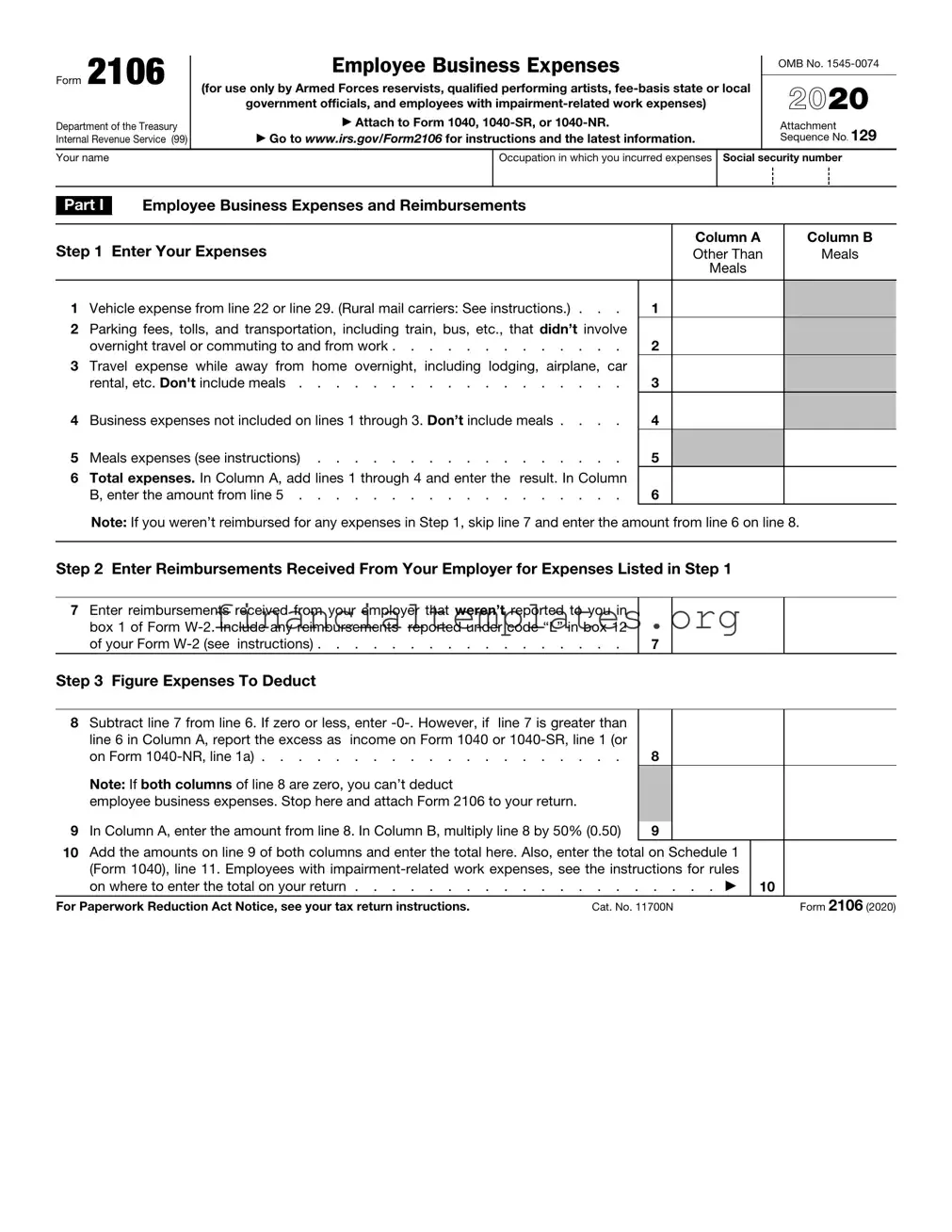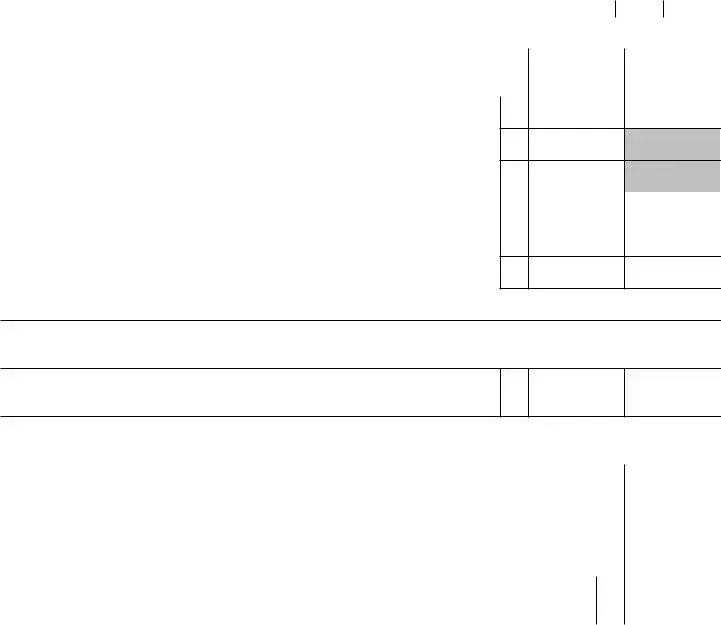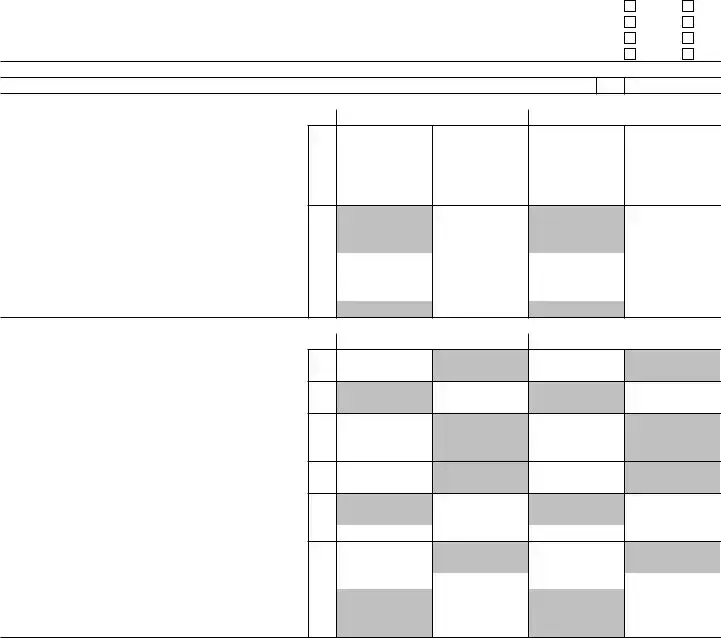The IRS 2106 form, used by employees to deduct work-related expenses not reimbursed by their employer, shares similarities with several other tax documents, each serving distinct purposes within the realm of tax filing and financial documentation. For instance, the Schedule C (Form 1040) is akin to the IRS 2106 in that it's also concerned with reporting expenses. However, Schedule C targets the self-employed, detailing profits and losses from their business, contrasting with 2106's focus on employees.
Similarly, the Schedule A (Form 1040) document parallels the IRS 2106, as it's utilized for itemizing deductions, which can include certain work-related expenses for those who qualify. While Schedule A encompasses a broader range of deductions beyond employment, such as mortgage interest and charitable donations, it still serves a complementary role to the 2106 form for employees seeking to maximize their deductible expenses.
The IRS form 1040-ES is designed for calculating and paying estimated quarterly taxes, mainly aimed at freelancers and independent contractors. Though distinct in its primary function from the 2106, which targets employees, both forms deal with the tax implications of work-related income and expenses, offering a platform for individuals to address their tax responsibilities based on their employment status.
The W-2 form is markedly related to the 2106, as it outlines an employee's annual wages and tax withholding by their employer. While the W-2 form reports earnings and pre-tax withholdings, the 2106 form allows for the detailing of work-related expenses not covered by such withholdings, complementing each other in the process of reporting an individual’s full tax obligations and savings.
Form 8829, Expenses for Business Use of Your Home, is used by home-based businesses to calculate the deduction for business use of a home. It parallels the IRS 2106 form in its purpose to itemize specific expenses for tax deduction purposes, though it specifically caters to home office and related expenses for those self-employed.
The IRS form 8863, for Education Credits (American Opportunity and Lifetime Learning Credits), serves a similar purpose to the 2106 by allowing individuals to claim deductions, in this case, for qualified education expenses. Both forms aid taxpayers in reducing their taxable income through various deductions, though they target different types of expenses.
Form W-9, Request for Taxpayer Identification Number and Certification, is primarily used in contexts where freelance or contract work is performed, serving a different purpose but still related to the realm of employment. It allows companies to collect the necessary information to report income paid to freelancers, who may then use forms like the 2106 to document their work-related expenses.
The IRS form 1099-MISC and its newer counterpart, form 1099-NEC, are used to report payments made to freelancers and independent contractors. These forms are related to the 2106 in the broad context of reporting income and associated work expenses, albeit targeting a different audience, emphasizing the IRS's categorization of workers and their respective tax reporting obligations.


